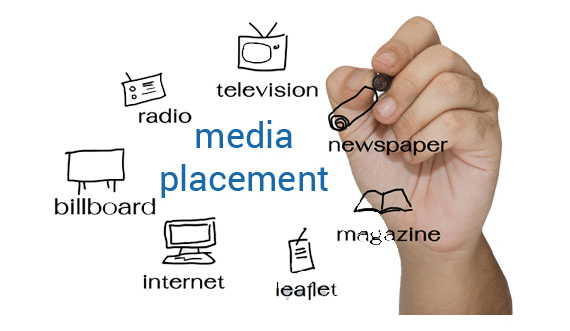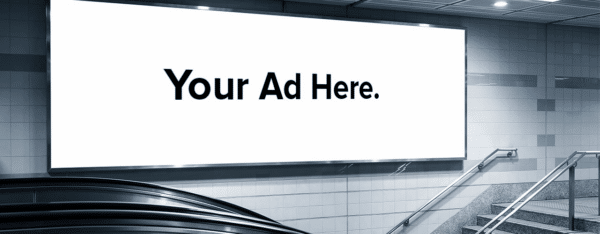Media placement means picking the right places to show ads or promotions. It’s like choosing the best spots to let people know about something. Just like putting up posters in the right places, but on TV, websites, or social media! Let’s learn more about media placement through this article.
Media placement is super important in advertising because it’s all about showing ads to the right people in the right places. Just like how you’d tell your friends about a cool game you found, companies want to tell the right customers about their products in the best ways possible, like on TV or online. Getting the message to the right people helps businesses succeed!
Media placement means finding the best places to show ads. It’s like figuring out where many people who might like a product hang out. Advertisers think about who might buy the product, what the product is, and what they want to achieve with the ads. Then, they decide if TV, radio, the internet, or social media is the right place to show the ads.
Before we learn more about the different types of earned media value and explore why it is so important, let’s first uncover the nature of media placement.
What is media placement?

Media placement is a big part of advertising. It involves selecting the optimal platforms to display advertisements, ensuring they reach a wide audience. These platforms can include TV, radio, newspapers, online platforms, or social media. The goal is to ensure that the ads are visible to the right audience, at the right time, and in the right locations, thereby increasing awareness about the product or brand being advertised.
In media placement, experts help decide where to put ads. They know a lot about places where ads can go and who sees them there. Researchers analyze data to identify optimal spots for each ad campaign. By understanding people’s preferences and behaviors, they can strategically place ads in the right locations and at the right times. This knowledge informs the creation of appealing ads that resonate with the audience, fostering meaningful connections with customers.
When individuals intend to display their ads on TV or the Internet, they need to choose the optimal timing and frequency, such as when more people are watching TV or using the internet. Additionally, they have to negotiate with TV or internet companies to secure a favorable deal for showcasing their ads.
In today’s world, how ads are shown to people changes as technology and how people act changes. Now, ads are not just on TV. They’re on the internet and social media, too. Companies use social media to talk to people who might buy their stuff and work with famous people on the internet who have lots of fans. This helps the companies connect with more people and make their brand stronger.
What are the different types of media placements?
Media placement means using different ways to show things like ads so that the right people see them. Here are some key types of media placements:

- Traditional media placements
- Digital media placements
- Outdoor media placements
- Influencer media placements
- Content marketing placements
Traditional media placements:
Media placement means putting ads in different places like TV, radio, newspapers, and magazines. TV ads show things using pictures and sound, while radio ads use only sound to talk to people. Newspapers and magazines are like big, colorful books with lots of stories and pictures, and ads can be in them, too. These ways help many people see the ads all at once, so they’re good for telling many people about something.
Digital media placements:
Digital media placement means putting ads on the internet in different ways. There are picture ads on websites and apps, ads on social media like Facebook and Instagram, videos on platforms like YouTube, and articles or videos online that talk about a brand. These ads are made to catch people’s attention while they’re using the internet.
Outdoor media placements:
Outdoor media placement means putting ads in public places where many people can see them, like on big signs by the road, on buses and trains, at airports, and in busy areas. These ads are great because many people notice them while out and about. They help make people remember a brand and are often made to be interesting to look at.
Influencer media placements:
Influencer media placement means famous or knowledgeable people talk about products or services on social media. These people work with companies to make real and honest posts. When they say something is good, their fans believe them. This is a great way for companies to talk to specific groups of people, especially young ones, because fans trust what their favorite influencers say.
Content marketing placements:
Content marketing is like making cool and helpful stuff online, such as blogs, videos, or podcasts, to interest a certain group of people. Companies do this to share useful information or fun things related to their products. They put these things on their social media and other websites. By doing this, companies can make friends with people who like what they make, and those people start to trust and like the company more.
What are the elements of media buying agency?
Putting ads in the right places needs a few important things to make ads work well. Here are the essential components of media placement:

- Target audience analysis
- Media channel selection
- Budget allocation and planning
- Content creation and optimization
- Placement timing and frequency
- Performance tracking and analysis
Target audience analysis:
To show ads to the right people, we need to know a lot about them, like how old they are, where they live, what they like, and what they do. This helps us put ads where these people like to look and talk about things they care about.
Media channel selection:
Picking where to put ads is really important. We can choose TV, radio, newspapers, or the internet, like social media and websites. It depends on where the people we want to talk to like to go. Each place has good things about it, so we can use a few different ones to make more people see the ads.
Budget allocation and planning:
Deciding how much money to spend on ads is very important. We need to choose where to spend money, like on TV, the internet, or other places where many people can see the ads. Planning the budget helps us spend the money wisely so that the ads work well and many people notice them.
Content creation and optimization:
It’s important to make interesting ads that fit where they’re shown. For example, we can have fun videos on social media, and on the radio, we can use short and exciting stories. The ads must catch people’s attention quickly and make them interested in what they see or hear.
Placement timing and frequency:
Knowing the right time to show ads is really important. We must consider when people are most likely to watch or listen. We don’t want to show ads too much, but we don’t want to show them too little. Finding the right balance helps people remember the ads and like them.
Performance tracking and analysis:
It’s important to see how well the ads are doing. We use special tools to check how many people see the ads, click on them, or buy things because of the ads. This information lets us know which places are best for showing ads. This helps us make the ads even better for the future.
Why is media placement important?
Choosing the right places to show ads is really important for making ads work well. Here is an in-depth exploration of why media placement holds significant importance.

- Targeted audience reach
- Brand visibility and recognition
- Influence on consumer behavior
- Optimized budget allocation
- Measurable performance and analytics
Targeted audience reach:
Media placement means putting ads where the right people can see them. Advertisers pick special places and websites so the ads can be seen by people interested in what they’re selling. This way, more people who might want to buy things see the ads and might like them!
Brand visibility and recognition:
Putting ads in the right places helps people remember a brand. When they see the same personal brand message often, they trust it more. This trust makes them like the brand and wants to buy from it. Good and regular ads make the brand stand out, so people can remember it even when there are many other choices.
Influence on consumer behavior:
Ads on TV, the internet, or in magazines can make people like certain things. If the ads are made well and shown a lot, they can make people want to buy those things. Ads with interesting stories and feelings can make people like a product, and they might decide to buy it. Advertisers use these ads to help people learn about a product and decide to get it.
Optimized budget allocation:
Smartly putting ads in the right places helps companies spend their money wisely. They look at which places make the most people like their ads and buy their stuff. Then, they spend more money on those good places. This way, they don’t waste money on ads that don’t work so well, which helps them work better.
Measurable performance and analytics:
Companies use special tools to see how well their ads are doing. They look at things like how many people click on the ads or visit their website because of the ads. This helps them figure out what works best. If something isn’t working, they can change it immediately to improve their ads for next time.
How do you get media placement services?
Getting the right places for ads is like following a plan. It would be best to learn where to put them, talk to others to get a good deal and make friends with the people who show the ads. Here is a detailed breakdown of the steps to obtain media placement:

- Define your goals and audience
- Research suitable media outlets
- Develop compelling content
- Build relationships with media contacts
- Negotiate placement terms
- Utilize media buying agencies
- Monitor and adjust campaign performance
Define your goals and audience:
First, decide what you want your ads to do, like making people know your brand or selling more products. Then, learn a lot about the people you want to show your ads to, like how old they are and what they like to do. This helps you choose the best places to put your ads where those people will see them.
Research suitable media outlets:
Find out where your audience is and choose places to put your ads there. This can be on TV, radio, newspapers, social media placements, websites, or with famous people online. See if those places have many people like the ones you want to reach. Also, check if other businesses like yours did well with ads in those places before.
Develop compelling content:
Make cool ads that people will really like. These ads should talk about things people want or like. It can be a video, a post on social media, or something in a newspaper. The ads should look nice and make people feel happy or excited. When your ads are good, they’ll let you show them in the right places.
Build relationships with media contacts:
Make friends with important people who work on TV, newspapers, or online. You can talk to them through emails or by meeting them at events. Being friends with them helps you know about good chances to show your ads and can help you get good deals when talking about your ads.
Negotiate placement terms:
When you want to show your ads, you have to talk with the TV or website people about where and how often your ads will be. Tell them how much money you have, and try to make a good deal. If you’re good at talking, you can get your ads in the best spots and pay less, so your ads work well.
Utilize media buying agencies:
You can ask experts to help you with showing your ads. These experts know where to put ads and are friends with TV and internet places. They can talk to them for you, so you get good spots for your ads and pay a fair price. These experts can also give you smart advice because they know much about this.
Monitor and adjust campaign performance:
After your ads show, use special tools to see how many people click on them or buy things because of the ads. Look at this information to know which places are best for your ads. If some ads work well, use more money there. If some ads don’t work, think about changing or stopping them.
Conclusion:
In the world of ads, knowing where to put them is super important for businesses to do well today. They need to learn about all the different places for ads, like on TV, the internet, or with famous people online. This helps them talk to the right people. Putting ads in the right places makes people remember the ads and want to buy things, which is really good for businesses.
Businesses can show their ads in the right places by researching, making great ads, and being friends with people on TV or the internet. They can also talk about where to put ads and get help from experts who know much about this. Doing this helps businesses put ads where many people can see them and doesn’t cost too much money.




